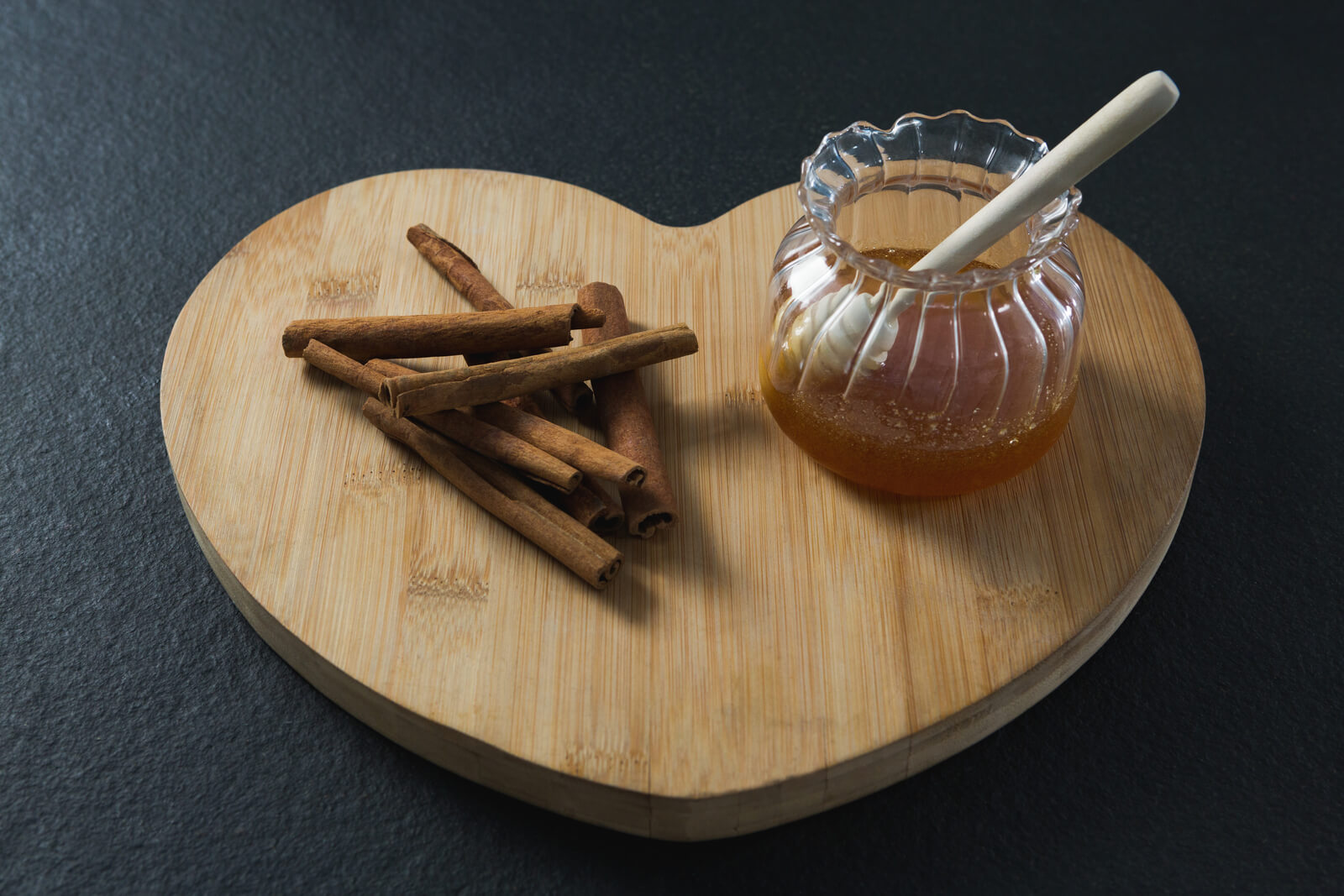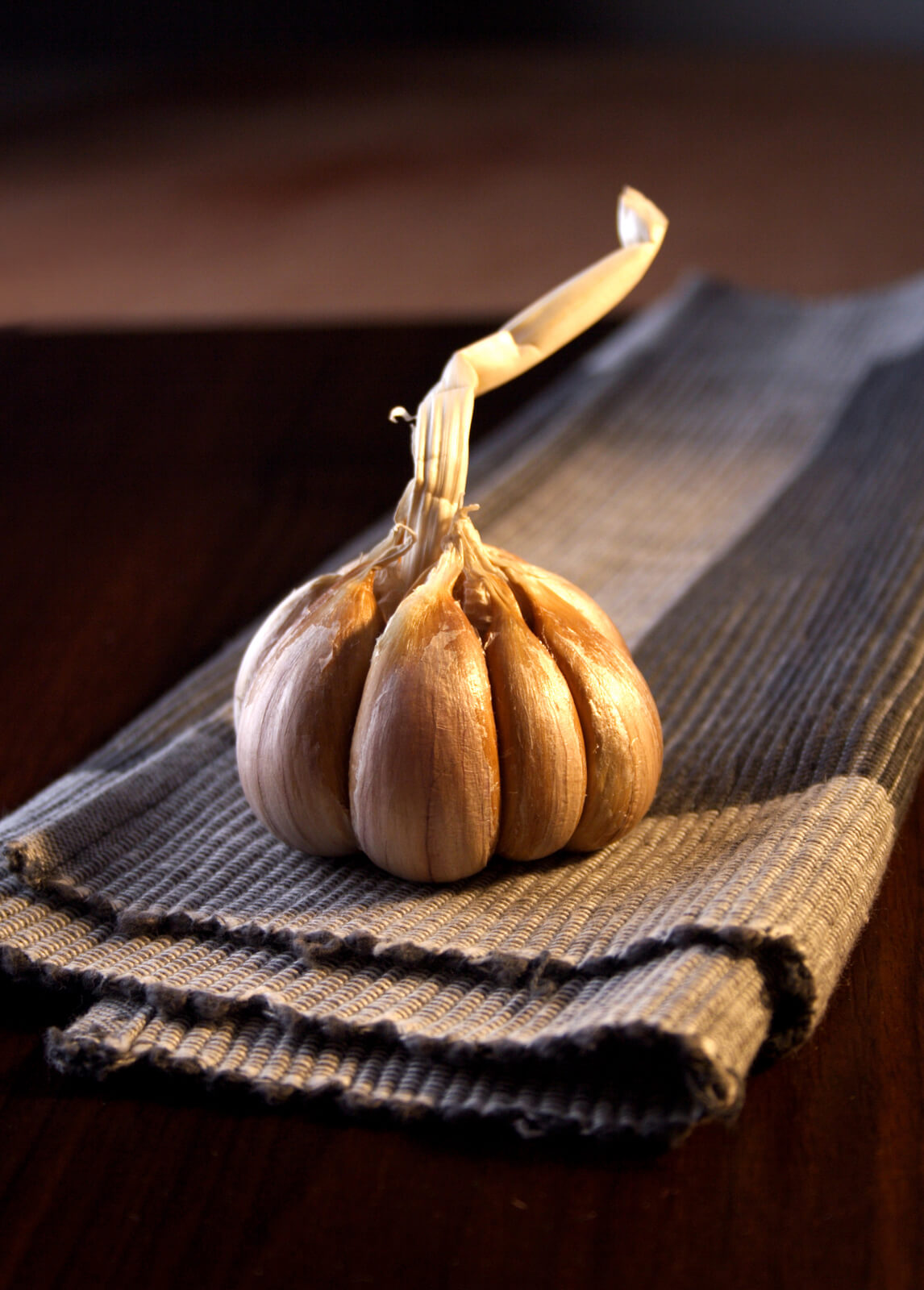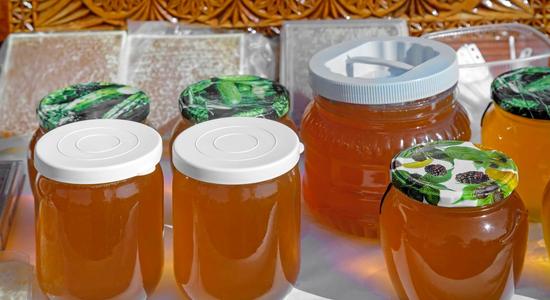See all "Honey" Section Topics

As you may have read on the other in-depth articles on honey and Candida, honey really does stop a yeast infection. But, the question remains, “how should you go about using honey vaginally?” The answer is by adding a few safe, natural herbs or essential oils to the honey and simply placing the mixture in the vagina. This home remedy for yeast infections will deliver a powerful blow and knock out your yeast infection.
One thing to remember is the excellent advice of one of the best experts on medicinal herbs: the late Dr. James A. Duke. Dr. Duke suggests in his book, The Green Pharmacy, that mixing herbs together can bring about a synergistic effect. Often, phytochemicals in one plant work one particular way to treat a condition. When you add more plant chemicals to the mix, you have a cure that attacks a malady in a variety of ways; resulting in a healing synergy. Consequently, you should choose a few different herbs to mix with honey to create the best vaginal honey yeast infection home remedy.
Honey and Cinnamon Yeast Infection Cure

One treatment that tastes good and really does help stop a yeast infection is honey and cinnamon. The other articles in this section have demonstrated the efficacy of honey’s anti-Candida properties; so let’s discuss cinnamon a little.
What we all normally have on hand is cinnamon bark powder. One study tested how Candida species that were resistant to fluconazole responded to Cinnamon bark powder. The study was published in the American Journal of Chinese Medicine [1996;24(2):103-9]. The study found that Cinnamon (Cinnamomum zeylanicum) bark inhibited the growth of Candida species at a minimum concentration of about 0.05-30 mg/ml. Therefore you should be able to use this safe, natural remedy to achieve the same results in your vagina. This should be a great herb to use for drug resistant strains of Candida as well. Just put a generous helping of fresh cinnamon powder in your honey and mix it well!
Cinnamon bark contains a few various phytochemicals that are responsible for its Candida killing powers. These chemicals were isolated in a study published in Evidence-Based Complementary and Alternative Medicine. The study has an interesting table on cinnamon. This table shows all the major chemical constituents of the various parts of the plant. The plant component we are interested in is of course the bark. The bark contains these two chemicals:
- Cinnamaldehyde: 65.00 to 80.00%
- Eugenol: 5.00 to 10.00%
There has been a lot of research done on Cinnamon and Cinnamaldehyde; and their effects on Candida species. One study was done on how Cinnamaldehyde affected Candida albicans (the yeast responsible for about 80% of Candida infections). This study was published in Medical Molecular Morphology [March 2013, Volume 46, Issue 1, pp 8-13]. The results of this study showed that a very small concentration of Cinnamaldehyde can inhibit and kill Candida albicans.
If you are already taking an antifungal drug to cure a vaginal yeast infection, cinnamon has also been shown to help reduce biofilm activity of Candida; and, it creates a healing synergy when used in tandem with such drugs. A study that proves this was published in the Journal of Antimicrobial Chemotherapy [(2012) 67 (3): 618-621]. Preformed Candida biofilms are a big deal if you have a yeast infection. The study reported that Candida with such biofilms, when present, give Candida about 1024 times its normal resistance to antifungal drugs! Consequently, destroying these biofilms should be done if you want to effectively cure your yeast infection.
The study did have promising results; it showed that both major components of Cinnamon bark (cinnamaldehyde and eugenol) showed promising antibiofilm activity. Eugenol and fluconazole also were seen to be a good combination for fighting Candida albicans.
If you have cinnamon essential oil, you can use this in your honey as well. For more information about cinnamon essential oil check out essential cinnamon oil for Candida.
A 1/2 Day & Yeast is Gone!
Linda Allen suffered from yeast infections for years. Through researching natural medicine & Candida, she found an efficacious solution!
Linda is one expert you want on your side! Let her show you how to get rid of a superficial yeast infection in just 12 hours; AND, keep it gone!
A 60-day, 100% money back guarantee is provided.
Visit Official Site!Honey and Garlic Candida Cure

Garlic is another safe food that is available at nearly every grocery store. Fortunately, garlic is also a great Candicidal herb! Garlic has been used at least since the time of the ancient Pharaohs; and, garlic and honey mixed together was used in antiquity to treat tooth problems. You can make a great vaginal Candida cure by mixing honey and crushed garlic; and it should cost a lot less than a prescription, or over the counter treatment!
When you put garlic in honey, make sure you do not let it sit for long periods of time. Although honey is a preservative, spores in garlic, that thrive in anaerobic conditions (no oxygen), can be present and cause illness. The bacteria Clostridium botulinum sometimes is found with garlic; and the spores it creates can live well in sealed environments—such as in oil or honey. In fact, boiling is not a safe way to remove them, as they can survive being boiled. This bacteria can create botulinum toxin; which if you have too much of this toxin you will develop botulism. Botulism is a serious illness and can cause paralysis. This is not of concern if you do not allow the garlic to sit in honey for over a day. Botulinum toxin builds up only if the spores are present, and if enough time is allowed to elapse. Using honey in garlic or oil the same day is of no danger; and is done around the world of course on a daily basis, of course.
Botulism aside, there are probably a plethora of studies that demonstrate garlic’s anti-Candida ability; but, we will look at one published in the Journal of Medicinal Food [7 (3) 2004, 327–333]. The study used 10 different strains of Candida obtained from various infected patients. The study showed that around 15 milligrams of garlic was capable of killing Candida yeast. Feel free to do more research on this topic; there certainly is no shortage of information!
To use garlic, you will want to take a few cloves and mix them in a blender. Let this mixture set for about 10 minutes; as this will allow alliin and alliinase to combine and form the powerful chemical allicin. Once it has rested, mix it into your honey and simply apply it liberally to your vagina. You should probably wash your vagina out with water before you apply the honey and garlic mixture.
Try doing this at night and let the mixture set in your vagina overnight. In the morning, wash it out and add some live culture acidophilus to the vagina. You can even use homemade acidophilus yogurt; just make sure the acidophilus is indeed alive. This helpful probiotic will help mitigate future yeast infections by consuming sugars and excreting lactic acid.
If you want some more information on garlic and using it for Candida yeast, you might want to check out the section of this website dedicated to this topic: garlic for yeast infection.
Eliminate Bacterial Vaginosis & Vaginal Odor
Jennifer O’Brien is one prominent expert on BV that knows how to get rid of vaginal odor. BV is a common infection that you don’t have to put up with.
Jennifer will show you how to naturally eliminate vaginal odor in just 3 days.
A 60-day, 100% money back guarantee is provided.
Visit Official Site!Mixing Herbs Together with Honey
You would do well to follow Dr. Duke’s advice about mixing herbs. If you have a few of these herbs on hand, include them with your honey. Use garlic, cinnamon, black walnut husk, or a Candicidal essential oil together to create a great yeast infection treatment. This website is full of natural cures that you can use in your treatment plan.
Author: Mr. Nicholas Gross

Nick Gross is a natural medicine enthusiast who has been researching and writing about natural medicine since 2008. Nick is primarily a web developer but also researches and authors written and video content about natural health. Nick has a bachelor’s degree in Management Information Systems from the University of Northern Iowa.
Disclaimer
The information on this website is not a prescription for anyone. This information is for informational or educational purposes only, and is not a substitute for professional medical advice or consultations with healthcare professionals.
Affiliate Disclosure
Some of the links provided on this website are affiliate links. When a purchase is made through these links, Candida Hub earns money from commission. This helps to keep the website up and helpful to people for free. Thank you for any support!
Stay Up to Date
If you enjoyed this article, consider following / liking our Facebook page. This page is primarily utilized to alert followers of new articles that are put on Candida Hub. Candida related news is also discussed. While you are there, you can see what has been more recently added to Candida Hub.
Clair Goodall: Author & Nature Lover
Clair Goodall is a bee-obsessed natural medicine convert from Minnesota. She is one expert you might want to know more about!
Clair will help you protect you and your family from toxic products and chemicals and help you discover solutions from nature.
Also, Clair’s book is backed by a 60-day, 100% money back guarantee
Visit Official Site!SOURCES:
- http://dx.doi.org/10.1142/S0192415X96000153 — In vitro activity of Cinnamomum zeylanicum against azole resistant and sensitive Candida species and a pilot study of cinnamon for oral candidiasis. American Journal of Chinese Medicine (1996;24(2):103-9)
- http://dx.doi.org/10.1155/2014/642942 — Cinnamon: A Multifaceted Medicinal Plant. Evidence-Based Complementary and Alternative Medicine Volume 2014 (2014), Article ID 642942, 12 pages
- http://dx.doi.org/10.1007/s00795-012-0001-0 — The effect of cinnamaldehyde on the growth and the morphology of Candida albicans. Medical Molecular Morphology (March 2013, Volume 46, Issue 1, pp 8-13)
- http://dx.doi.org/10.1093/jac/dkr512 — Antibiofilm activity of certain phytocompounds and their synergy with fluconazole against Candida albicans biofilms. Journal of Antimicrobial Chemotherapy [(2012) 67 (3): 618-621]
- http://dx.doi.org/10.1089/1096620041938669 — In vitro antimicrobial properties of aqueous garlic extract against multidrug-resistant bacteria and Candida species from Nigeria. Journal of Medicinal Food (7 (3) 2004, 327–333)
- Google Books — Duke, J. A. (1997). The green pharmacy: New discoveries in herbal remedies for common diseases and conditions from the world's foremost authority on healing herbs. Emmaus, Pa: Rodale Press.







